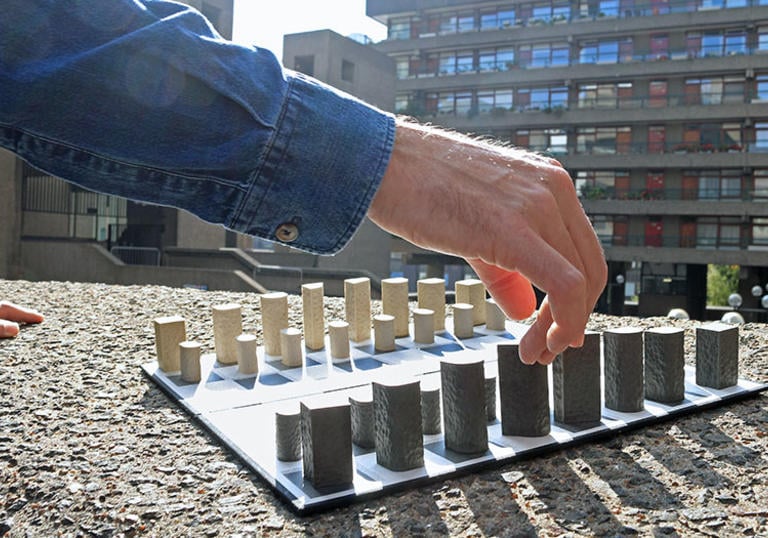How did you end up working in design?
At school for my A-levels I studied both Art and Design & Technology. I knew I wanted to work in design and my teachers introduced me to an old pupil of the school who had gone on to study at Central Saint Martin’s, which planted the seed for later applying to do my BA in Three Dimensional Design there. I then worked for 5 years in London before travelling to India to work and live for a further three years. It was here that I re-established my interest in making. When I came back to the UK I realised that an MA would give me the time to hone my thoughts on what designing and making means today and what it could mean tomorrow. After my graduation I set up my studio and continue to explore this field alongside client projects and commissions.
What does a typical day (if there is one…!) look like in your studio?
Maybe it’s best to describe today… Breakfast in the studio, catch up on emails, of course. Packed up some equipment borrowed for an exhibition to return to them and headed to a maker space to use a laser cutter to make a packaging prototype. That went well, returned the equipment back in the studio for some more emails. Photographed some samples to send to a client and had lunch with some friends in another studio down the hall. Friday afternoon, glass of wine and a few bits of kit to rebuild after putting it off post London Design Festival!
The characteristic texture of the Barbican was created by hand-held pneumatic drills, how did you recreate this effect on a smaller scale?
When you learn that the texture on concrete was made by hand held tools it seems rather unbelievable. All those balconies, walk ways and facades, I wonder if anyone ever calculated the square meterage? I tried to create this ‘rusticated’ effect using a chisel, I am not a trained crafts person and it didn’t go well. I learnt on tool called a haptic arm, it’s a digital tool that allows you to form an on screen block of clay. What is unusual is that the tool gives you a physical feedback as you work. You can sense the material as if it were present and real. So I used this ‘digital’ chisel to make the pieces.
Your previous work, such as Fuzzy Logic and Thaw, have combined digital and traditional into some radical production methods – what role does experimentation play in your work?
Experimentation is what keeps me interested, I am always curious to know what happens if…? With little prior knowledge of, for example, felting, I was free to find my own way. I used the skills I do have, which is sometimes to connect the dots that maybe others haven’t. In Fuzzy Logic that meant using a jigsaw to produce felted textiles, or in Thaw ice to cast with plaster.
You’ve worked in a wide range of materials, from wool to ice, balloons and now concrete – do you have a favourite medium?
No, I like many materials. I think what really interests me with materials is how they are used. The tools we use to shape them and how those tools can be changed and designed to suit our needs today.
What other iterations did you explore when creating your Barbican inspired chess board?
The surface treatment for the pieces came quite naturally, but the actual forms for the pieces took longer to figure out. I took many trips to the Barbican to record the architecture. Out of these trips, a simple structure or hierarchy of shapes formed and these became the profiles for the pieces. The original box and board were quite different to the design Jamie Temple and I developed for the set today. Jamie is an accomplished printer and artist, and having seen his architecture inspired work I asked him to help me develop the board and box. He uses a reductive method of lino cutting to print the playing surface, this means that there will only be a limited number of prints from which the board can be made.
What other projects are in the pipeline?
A giant lakeside Barbican chess set… keep a look out on Kickstarter.
Do you have any advice for artists/designers looking to work in product design?
Try lots of things, get good at a few of them, find space to pursue your interests, collaborate, stick with it and don’t give up. There is wealth in more than money but if you’re an artist or designer you probably know that already.

